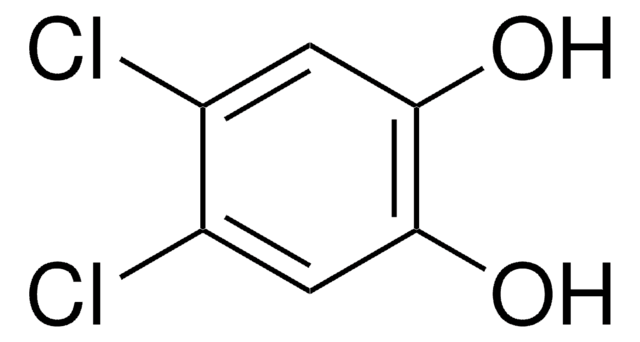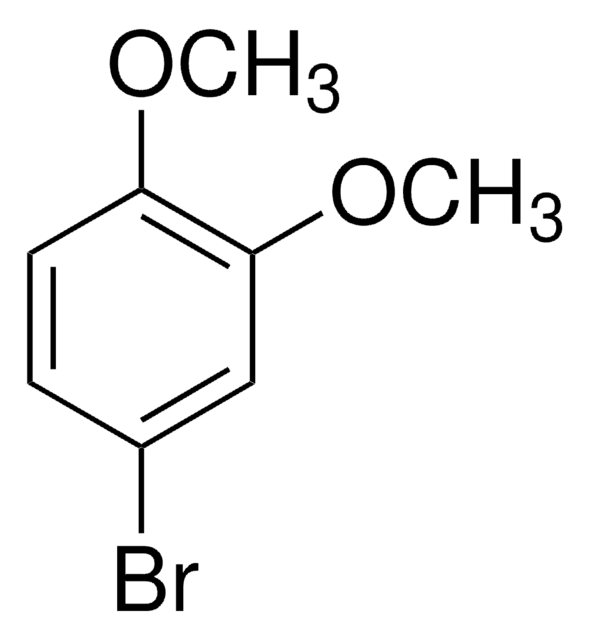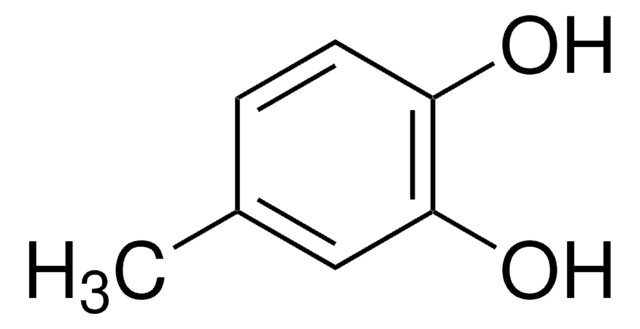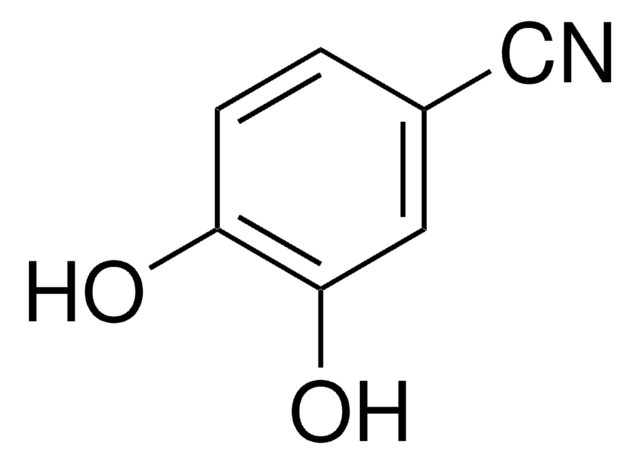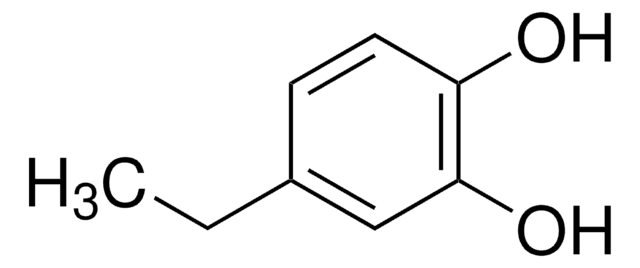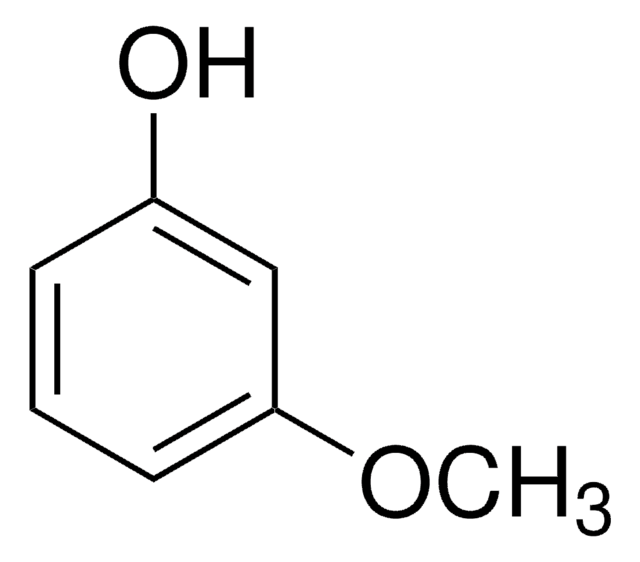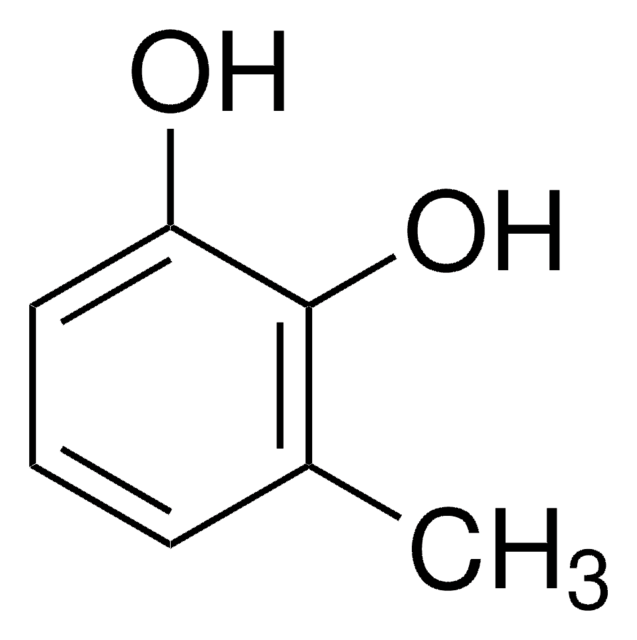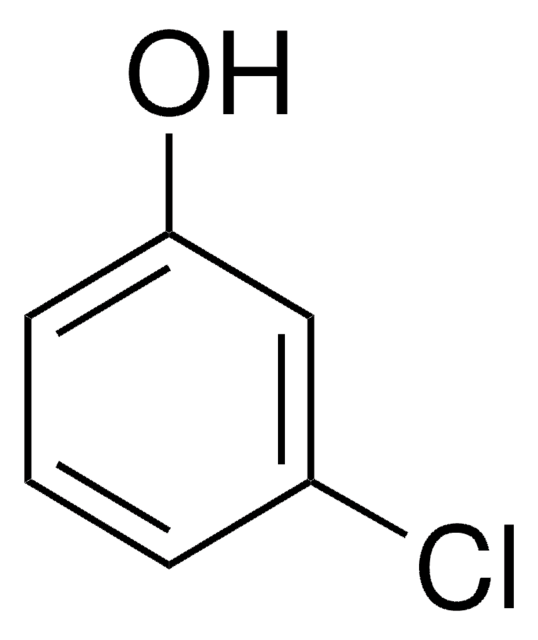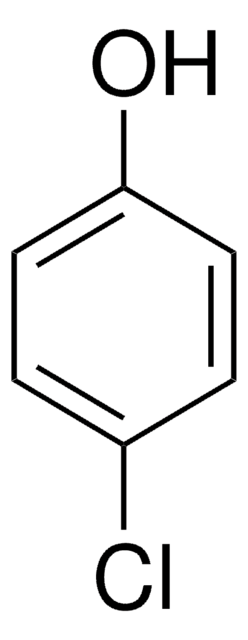148520
4-Chlorocatechol
97%
Autenticatiper visualizzare i prezzi riservati alla tua organizzazione & contrattuali
About This Item
Formula condensata:
ClC6H3(OH)2
Numero CAS:
Peso molecolare:
144.56
Numero CE:
Numero MDL:
Codice UNSPSC:
12352100
ID PubChem:
NACRES:
NA.22
Prodotti consigliati
Livello qualitativo
Saggio
97%
Punto di fusione
90-94 °C (lit.)
Gruppo funzionale
chloro
Stringa SMILE
Oc1ccc(Cl)cc1O
InChI
1S/C6H5ClO2/c7-4-1-2-5(8)6(9)3-4/h1-3,8-9H
WWOBYPKUYODHDG-UHFFFAOYSA-N
Categorie correlate
Descrizione generale
4-chlorocatechol was a major degradation product of 4-chloro-2-aminophenol (4C2AP). The degradation of 4-chlorocatechol was catalyzed by cphA-I enzyme.
Avvertenze
Danger
Indicazioni di pericolo
Classi di pericolo
Skin Corr. 1B
Codice della classe di stoccaggio
8A - Combustible corrosive hazardous materials
Classe di pericolosità dell'acqua (WGK)
WGK 3
Punto d’infiammabilità (°F)
Not applicable
Punto d’infiammabilità (°C)
Not applicable
Dispositivi di protezione individuale
Eyeshields, Faceshields, Gloves, type P3 (EN 143) respirator cartridges
Scegli una delle versioni più recenti:
Possiedi già questo prodotto?
I documenti relativi ai prodotti acquistati recentemente sono disponibili nell’Archivio dei documenti.
I clienti hanno visto anche
Y Samet et al.
Journal of hazardous materials, 138(3), 614-619 (2006-07-18)
Electrochemical oxidation of 4-chloroguaiacol (4-CG) at Nb/PbO(2) anodes was studied under different experimental conditions such as initial concentration of substrate, electrolysis time, temperature and pH. We measured the concentrations of 4-chlorocatechol (4-CC), 2-methoxyhydroquinone (2-MHQ), maleic acid (MA) and carbon dioxide
X Guan et al.
Analytical chemistry, 72(11), 2423-2427 (2000-06-17)
A sensitive and selective sensing system for chlorocatechols (3-chlorocatechol and 4-chlorocatechol) was developed based on Pseudomonas putida bacteria harboring the plasmid pSMM50R-B'. In this plasmid, the regulatory protein of the clc operon, ClcR, controls the expression of the reporter enzyme
A Farrell et al.
Journal of industrial microbiology & biotechnology, 28(6), 316-324 (2002-05-29)
A bacterium, CP1, identified as Pseudomonas putida strain, was investigated for its ability to grow on and degrade mono-chlorophenols and phenols as sole carbon sources in aerobic shaking batch culture. The organism degraded up to 1.56 mM 2- and 3-chlorophenol
Pankaj Kumar Arora et al.
Environmental science and pollution research international, 21(3), 2298-2304 (2013-09-24)
Burkholderia sp. RKJ 800 utilized 4-chloro-2-aminophenol (4C2AP) as the sole carbon and energy source and degraded it with release of chloride and ammonium ions. The metabolic pathway of degradation of 4C2AP was studied and a novel intermediate, 4-chlorocatechol was identified
A Farrell et al.
Biodegradation, 10(5), 353-362 (2000-06-28)
A mixed microbial community, specially designed to degrade a wide range of substituted aromatic compounds, was examined for its ability to degrade mono-chlorophenols as sole carbon source in aerobic batch cultures. The mixed culture degraded 2-, 3-, and 4-chlorophenol (1.56
Global Trade Item Number
| SKU | GTIN |
|---|---|
| 148520-1G | 4061838738011 |
Il team dei nostri ricercatori vanta grande esperienza in tutte le aree della ricerca quali Life Science, scienza dei materiali, sintesi chimica, cromatografia, discipline analitiche, ecc..
Contatta l'Assistenza Tecnica.